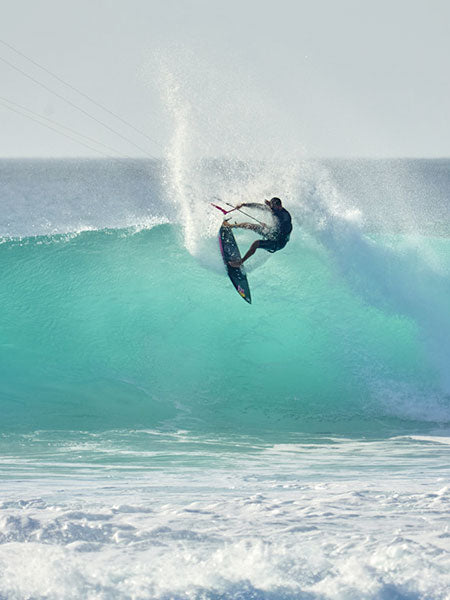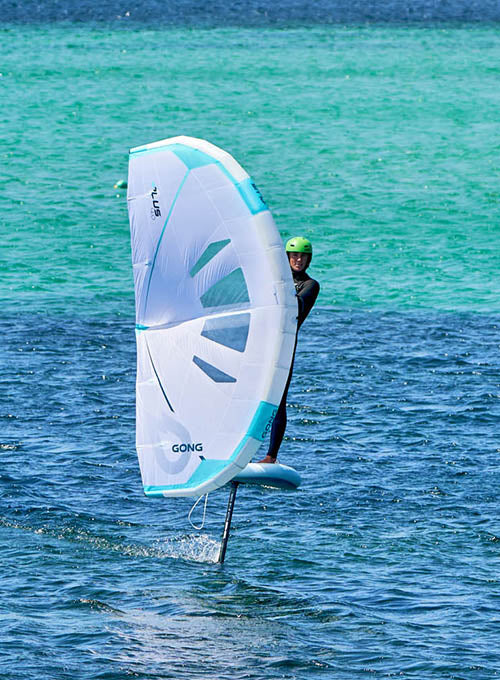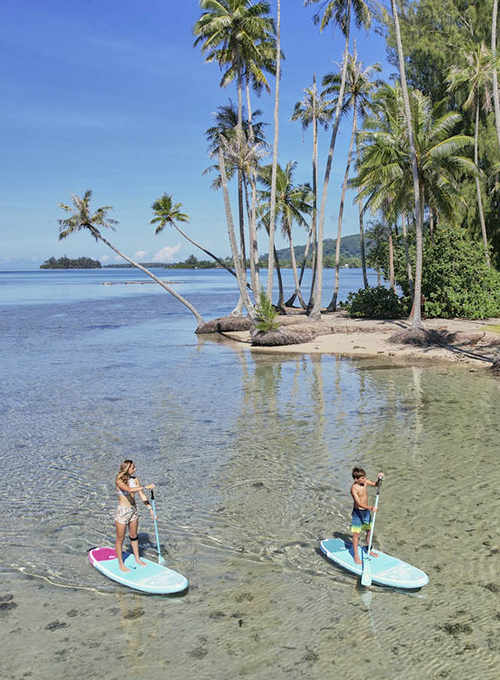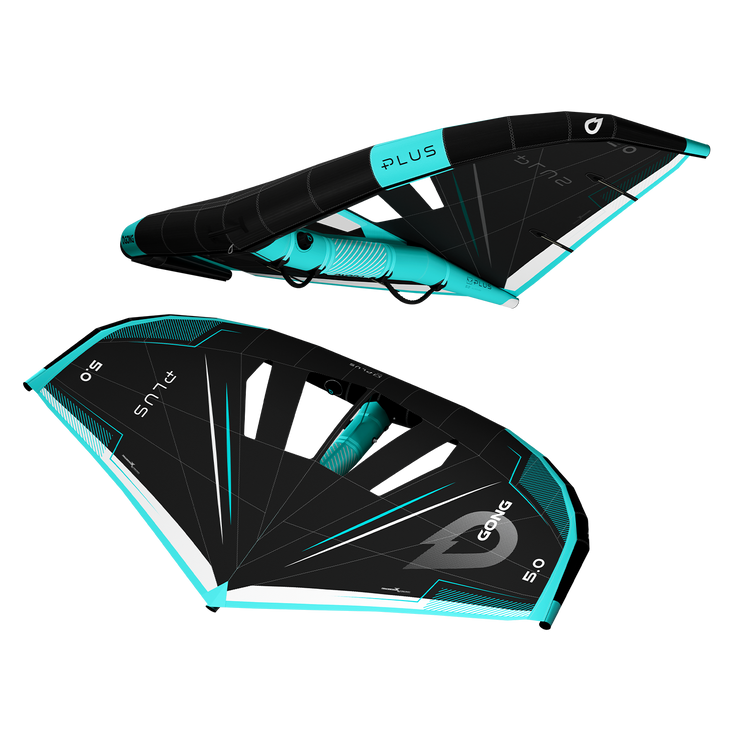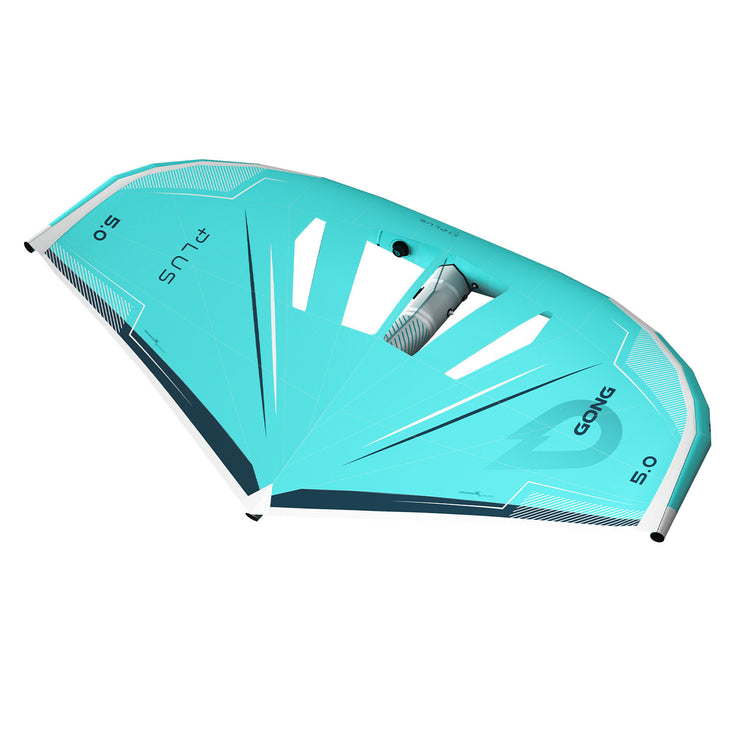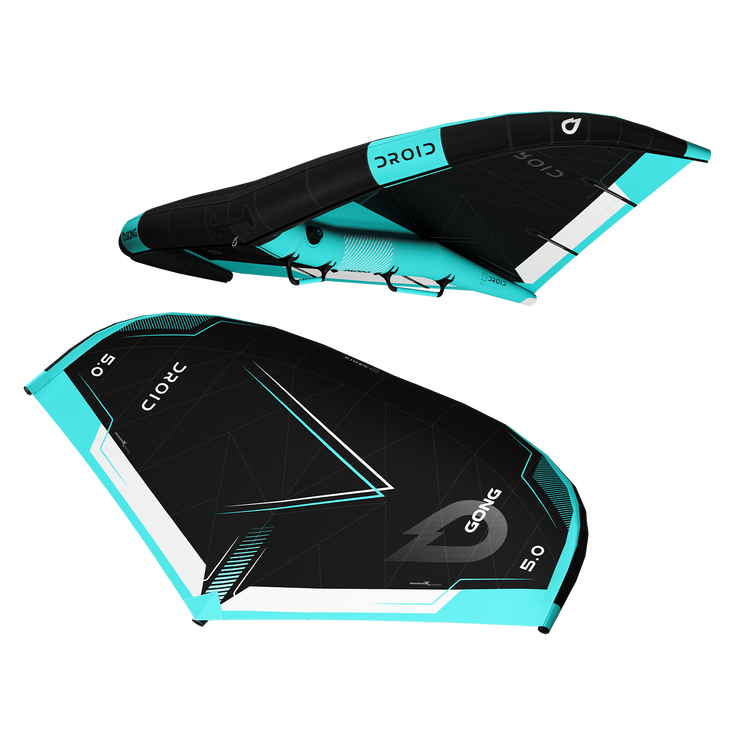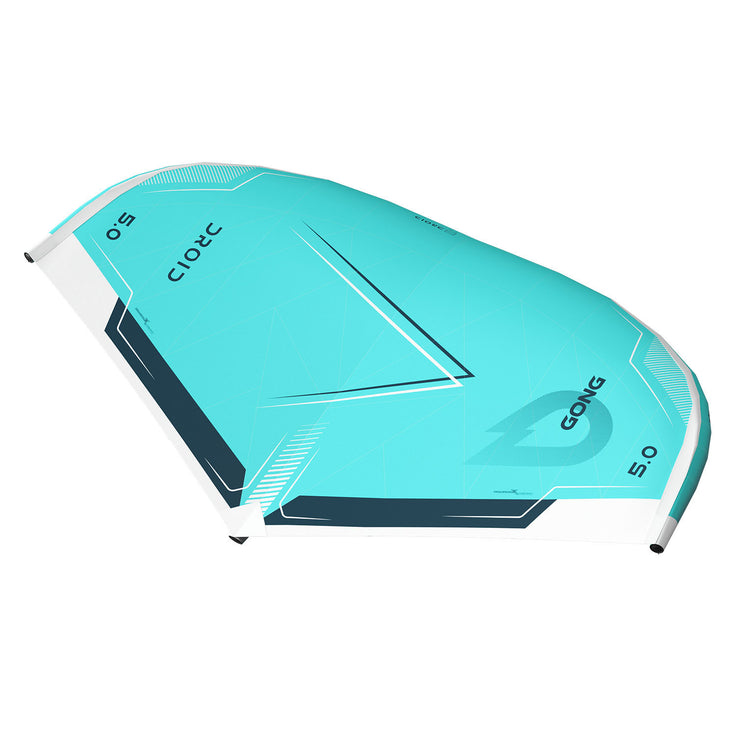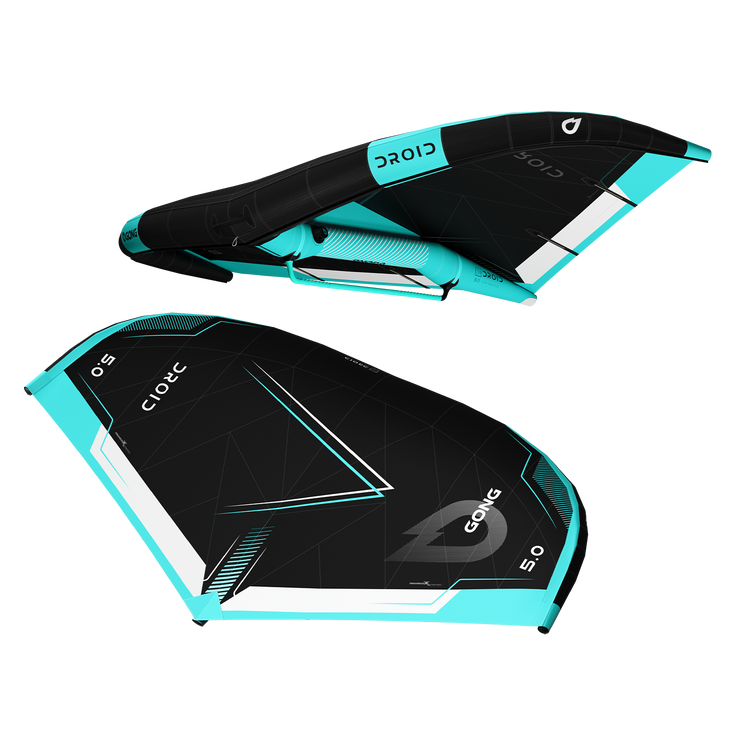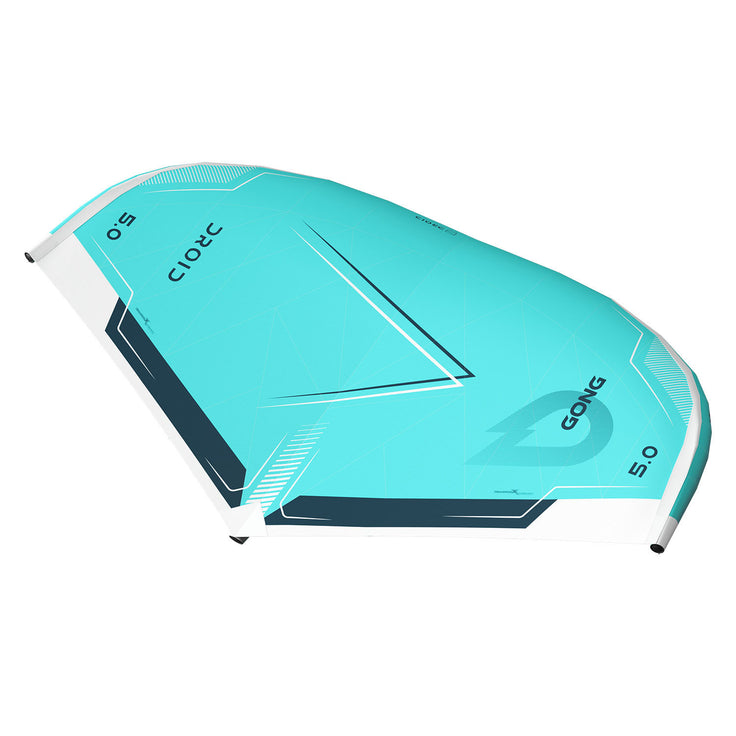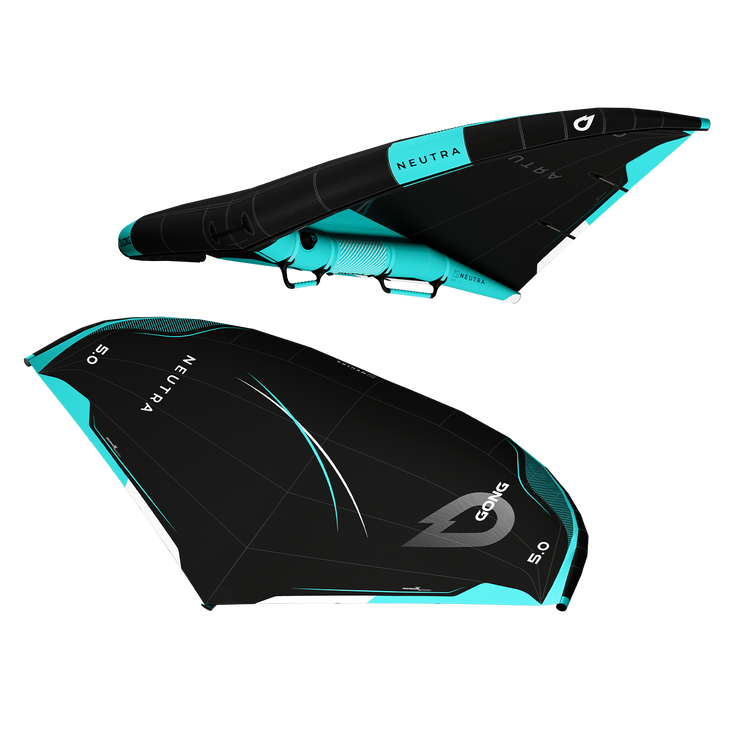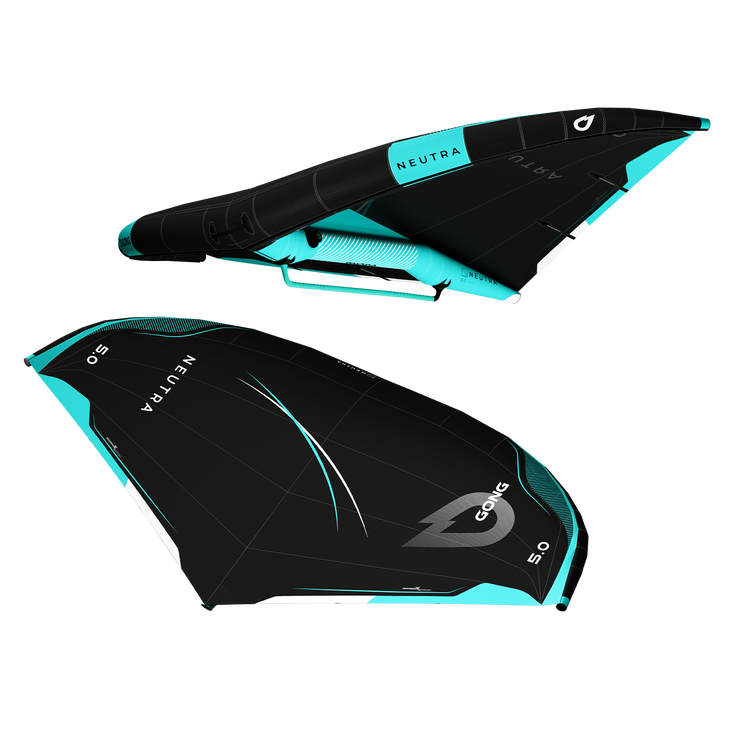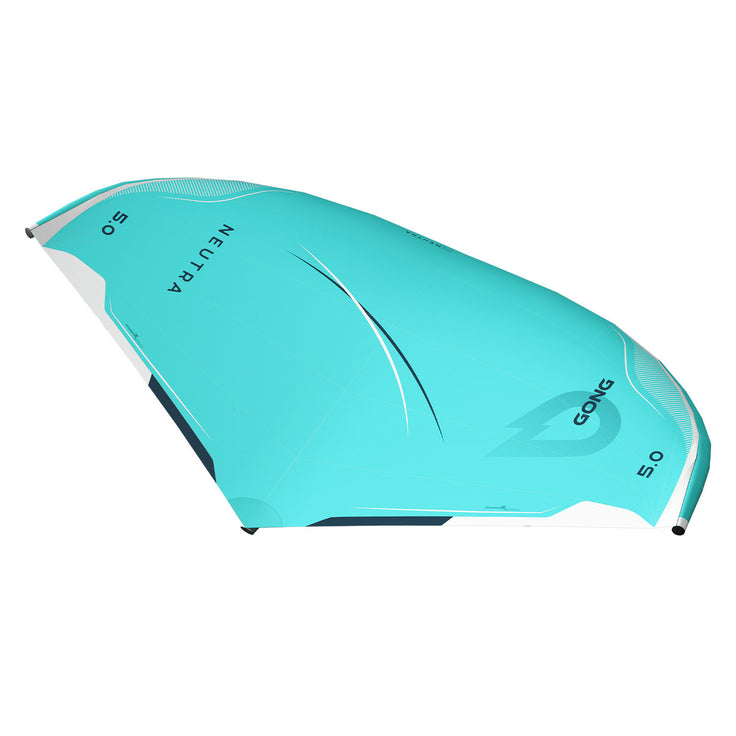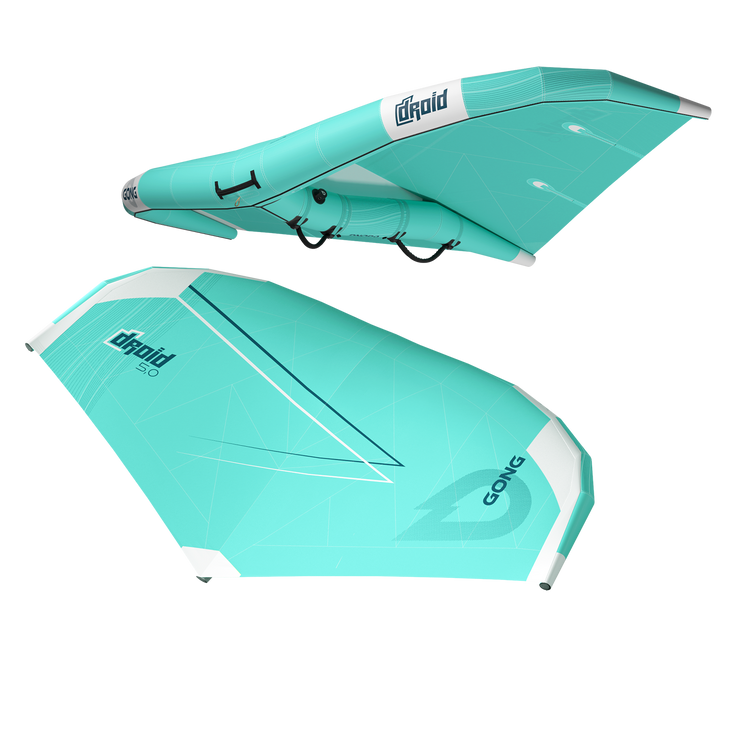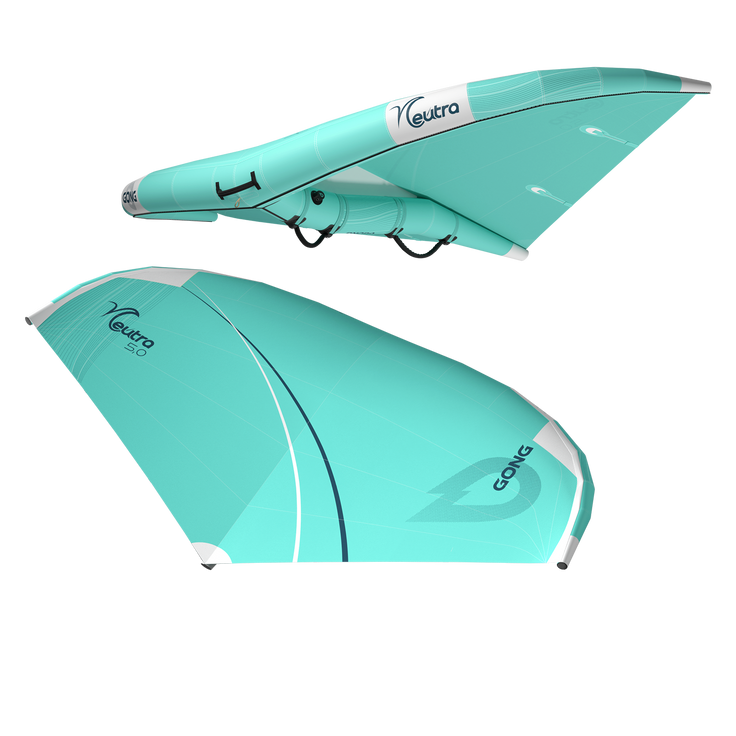Plus Wing
Droid Wing
Droid Boom Wing
Neutra Wing
Neutra Boom Wing
Wing Plus
Wing Droid
Wing Neutra

Wing Neutra
Range presentation
1. Introduction to the Perf Series Range: Versatility for All Riders
The Perf Series range offers a perfect balance between performance, durability, and simplicity, at an unbeatable price.
Designed to meet the expectations of riders, whether beginners or advanced intermediates, these wings are a blend of efficiency and reliability.
Their robust Dacron construction, combined with proven designs, ensures intuitive handling, remarkable durability, and a cool riding experience, session after session.
Whether you are exploring the basics of wingfoiling or seeking to advance in freeride, freestyle, or surf, the Perf Series range is designed to elevate your sessions while respecting your budget.
2. The Genesis of the Perf Series Range
Our mission is to democratize wingfoiling by offering high-performance, reliable, and accessible wings. The Perf Series is the fruit of this vision.
Developed in-house by our team of engineers and designers, and tested by passionate riders, these wings combine simplicity with proven innovations.
Thanks to our cutting-edge tools (CAD, digital wind tunnel, aging tests), we have optimized every aspect: durability, lightness, and ease of use.
Carefully manufactured in our factory, they embody our commitment to superior quality at a direct-to-consumer price.
3. Qualities of the Perf Series Range
- Versatility: These wings are designed to adapt to all practices and skill levels, from discovering wingfoiling to perfecting techniques.
- Durability: With Dacron construction and reinforced canopy, they withstand impacts and frequent stress. Ideal for riders looking for durable equipment.
- Simplicity: Their intuitive design makes them easy to handle and steer, whether learning your first transitions or perfecting advanced maneuvers. Their slightly larger center section provides a useful base of power for progression, while the tips release excess traction.
- Performance: A carefully designed shape offers an excellent compromise between stability and maneuverability, with optimized power for dynamic and progressive sessions.
- Affordability: Offered at a direct-to-consumer price, the Perf Series makes wingfoiling more accessible, costing 2 to 3 times less than traditional distribution without compromising quality. Their resale value is also more advantageous.
- Exclusive Services: GONG supports its customers with personalized advice, original spare parts/materials always available, and a workshop in France to maintain or repair your wings.
4. Detailed Comparisons and Tips for Each Program
- Beginning: Start wingfoiling the right way
To learn the basics, a wing must be stable, powerful, and easy to control.
- Plus Perf: Ideal for beginners thanks to its accessible power and intuitive handling. Its lightness and stability allow for quick progression while remaining enjoyable for advanced freeride riders.
Lightwind: Make the most of light winds
In light wind conditions, a powerful and responsive wing is essential.
- Droid Perf: Its compactness and pumping ability make it a reference in lightwind, ideal for making the most of every breeze.
- Plus Perf: Stable and powerful, it provides excellent traction for early takeoff and smooth glide, even in light winds. Its ease of use makes it a perfect choice for maximizing lightwind sessions.
Freeride: Prioritize versatility and fun
Freeride means exploring without constraints, with a wing capable of everything and self-regulating its power.
- Plus Perf: Perfect for smooth transitions and relaxed cruising, while offering enough power for more ambitious moves.
- Neutra Perf: Stability, smoothness, and control ensure super enjoyable sessions in all conditions.
Freestyle: Push your limits
Freestyle requires power, immediate responsiveness, and precise control.
- Droid Perf: Its maneuverability and explosive lift make it perfect for chaining tricks.
Freefly: Let yourself be carried
For downwind rides and exploiting bumps, a lightweight and balanced wing is essential.
- Neutra Perf: With its finesse and stability, it becomes almost imperceptible, letting you focus on your glide.
Waveriding: Tackle waves with precision
Surfing with a wing requires a responsive and maneuverable design.
- Neutra Perf: Ideal for carving in waves, its lightness and precision ensure fluid trajectories.
- Droid Perf: Versatile, it excels at combining surf and freestyle with immediate responsiveness.
5. Focus on Perf Series Technology
Perf Series wings are made with robust and reliable materials:
- Dacron: A solid and resistant structure, perfect for handling repeated stress while remaining lightweight.
- Reinforced Canopy: Triple ripstop fabric for optimized tension to ensure excellent handling and enhanced longevity.
- Durable Bladders: Reinforced thickness to prevent puncture risks.
These material choices guarantee remarkable durability while offering intuitive and enjoyable handling for all riders. Each model is designed to maximize enjoyment, focusing on simplicity and reliability.
6. Rider Testimonials
Plus Perf
"The perfect wing for beginners! It allowed me to learn quickly and remains super enjoyable in freeride."
"Stable, easy to control, yet high-performing when I push it a bit further."
"Immediate takeoff; it pulls forward nicely for acceleration without pumping."
"I've been using it since the start because it’s my most versatile wing."
Droid Perf
"Powerful and responsive, perfect for lightwind. I also use it for freestyle due to its incredible lift."
"Super versatile, it adapts to all my sessions, even in changing conditions."
"Compact, powerful, I can be sure to glide."
Neutra Perf
"Smooth and precise glide, perfect for surfing. It accompanies me on all my outings."
"Lightweight and maneuverable, it’s a pleasure to use in freefly."
"What smoothness—pumping this wing is a joy because it feels so light and responsive."
7. FAQ: Frequently Asked Questions About the Perf Series
Q: Are these wings suitable for beginners?
A: Yes, the Plus Perf is particularly well-suited for beginners, with intuitive handling and great stability. It’s a wing for progressing and one that you’ll love to keep even with a good skill level.
Q: How do I maintain my Perf Series wing?
A: Dry it after each session, store it out of direct sunlight, and regularly inspect the seams and fabric to repair any damage. A wing wears out naturally; just take care of it. Consider replacing the bladders when they wear out (after several years unless mistreated).
Q: What’s the difference between the Perf Series wings and the Team Series?
A: One word: rigidity. However, it’s important to understand that a bit of well-positioned flexibility in the Perf wings provides softness and forgiveness, which are essential qualities for progression. On the other hand, Team wings are stiff and full-power all the time to deliver maximum performance.
Q: Are Perf Series wings less durable than Team Series wings?
A: Yes, if subjected to the same extreme constraints. But remember that a Perf is designed for progression, not World Cup competition. It’s worth noting that GONG Perf wings have the lowest failure rate on the market: 0.4% in 2024. This is a unique level of durability for Dacron. Dacron is also the most common and easiest material to find and repair—a serious advantage.
Q: Can Perf Series wings be inflated as hard as Team Series wings?
A: Aramid wings can be inflated much harder, ensuring they won’t flex at all. That’s not the role of the Perfs, which are designed to absorb impacts for the rider! Properly inflated Perf Series wings deliver excellent performance and great comfort. If you need more, it’s time to switch to Aramid.
8. Conclusion: Accessibility Without Compromise with Perf Series Wings
The Perf Series wings offer an entry into the world of wingfoiling without sacrificing performance, as proven by their multiple victories in World Cups in recent years.
Designed to last and support your progression, they embody our commitment to making this sport accessible to everyone, thanks to a direct-to-consumer model and exclusive services.
Whether you’re just starting or seeking to improve, choose the Perf Series to fully enjoy every session.
DACRON Wing Technology
DACRON Wing technology
Our wings are made in one of the two largest kite and wing factories in the world according to the quality standards of the best wings.
They are built with the greatest care. The panels are CNC cut and entirely assembled by hand by the best workers in the kite industry.
The materials we use for our wings are among the finest. We are looking for performance of course but we also want endurance and therefore materials that have proven themselves:
- Leading edge and central strut in very rigid and durable Dacron DP175LL.
- Top of the range triple Ripstop spinnaker for anti propagation of tears in 54g/m2.
- Insigna reinforcements on all seams for greater durability.
- Tip saver in 1680D Nylon to protect against friction on the tips.
- Kevlar reinforcements under the handle/boom attachments on the central strut.
- 80 micron thick TPU cushions.
- One Pump system for quickly inflating and deflating.
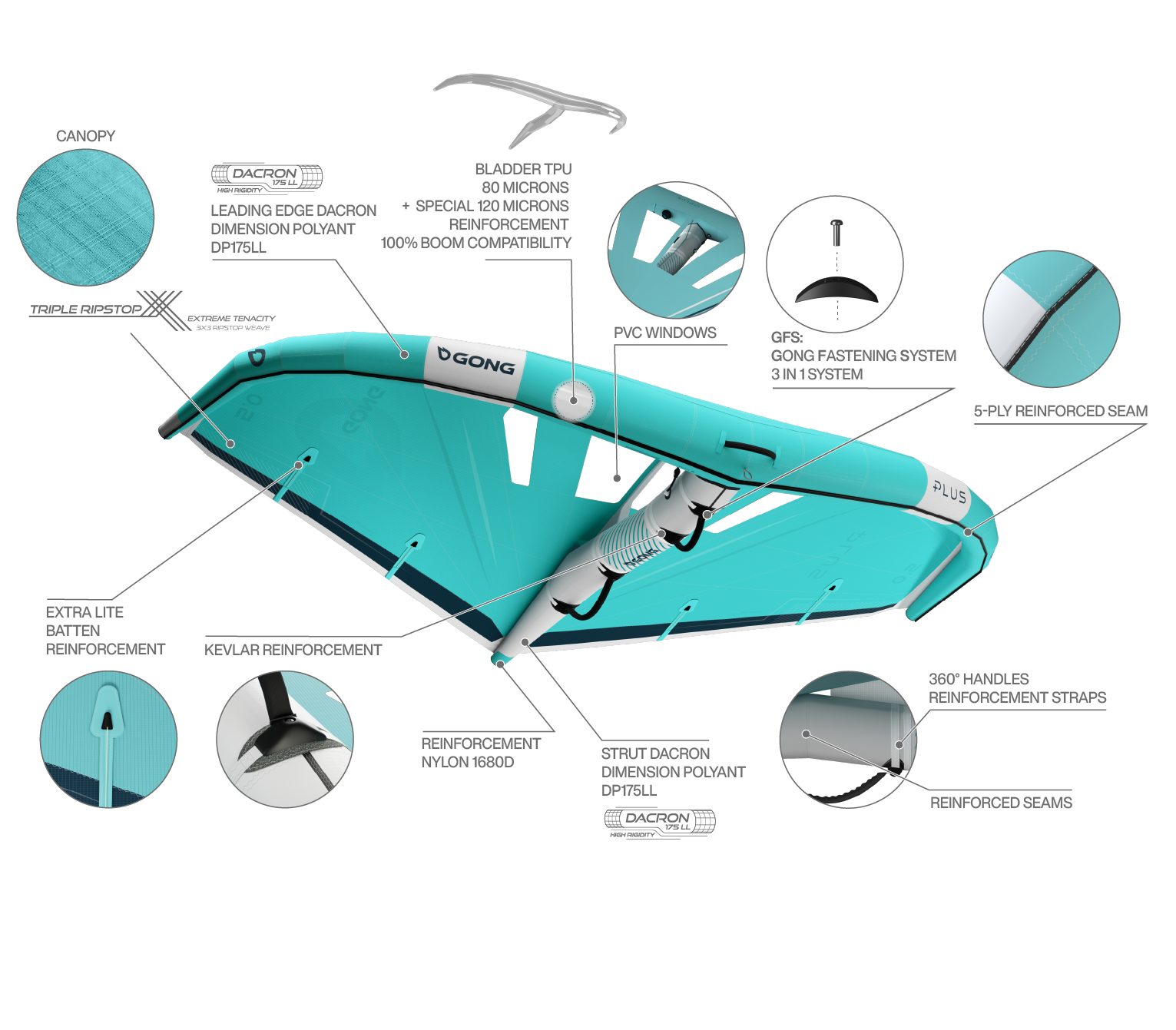
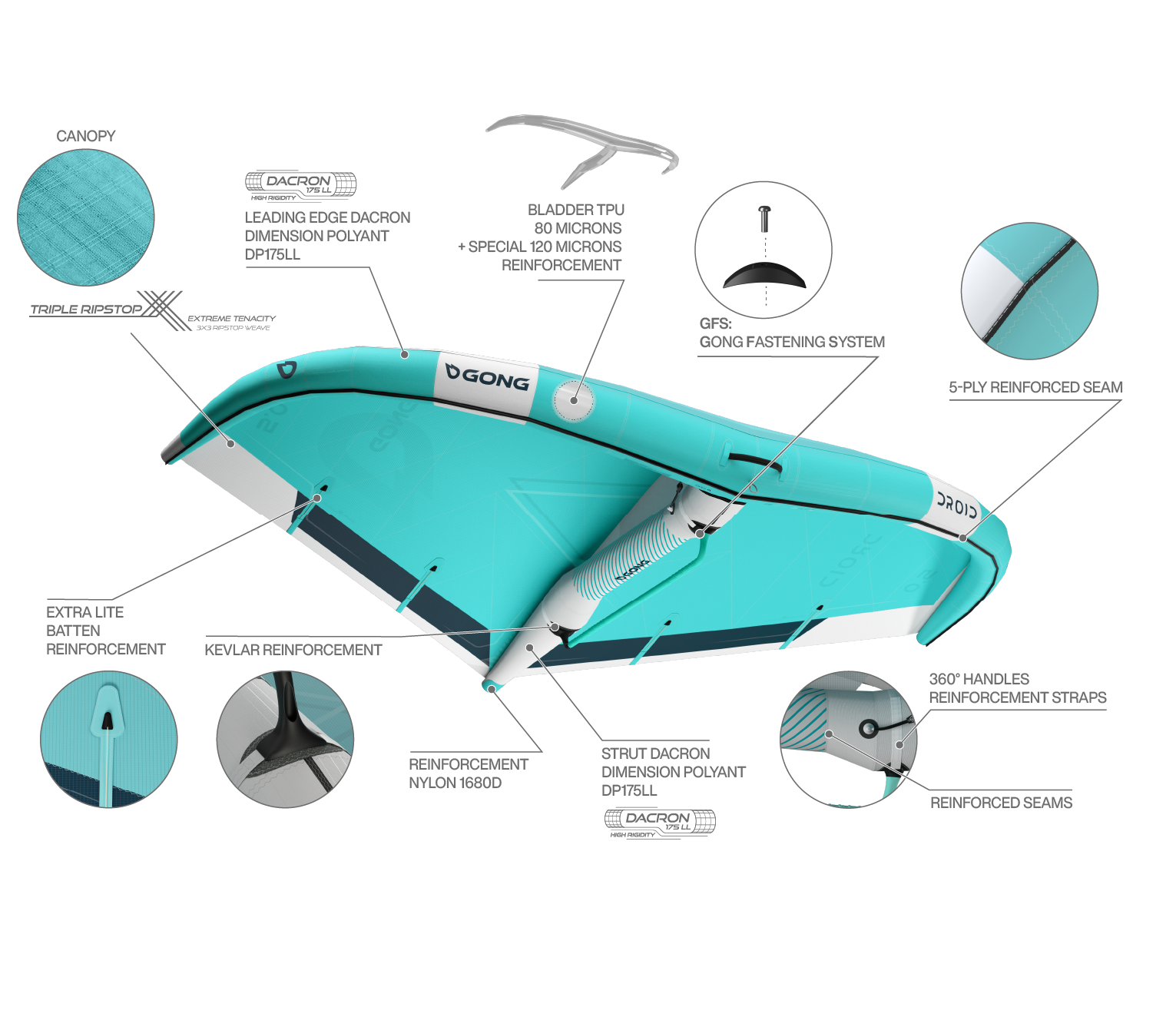
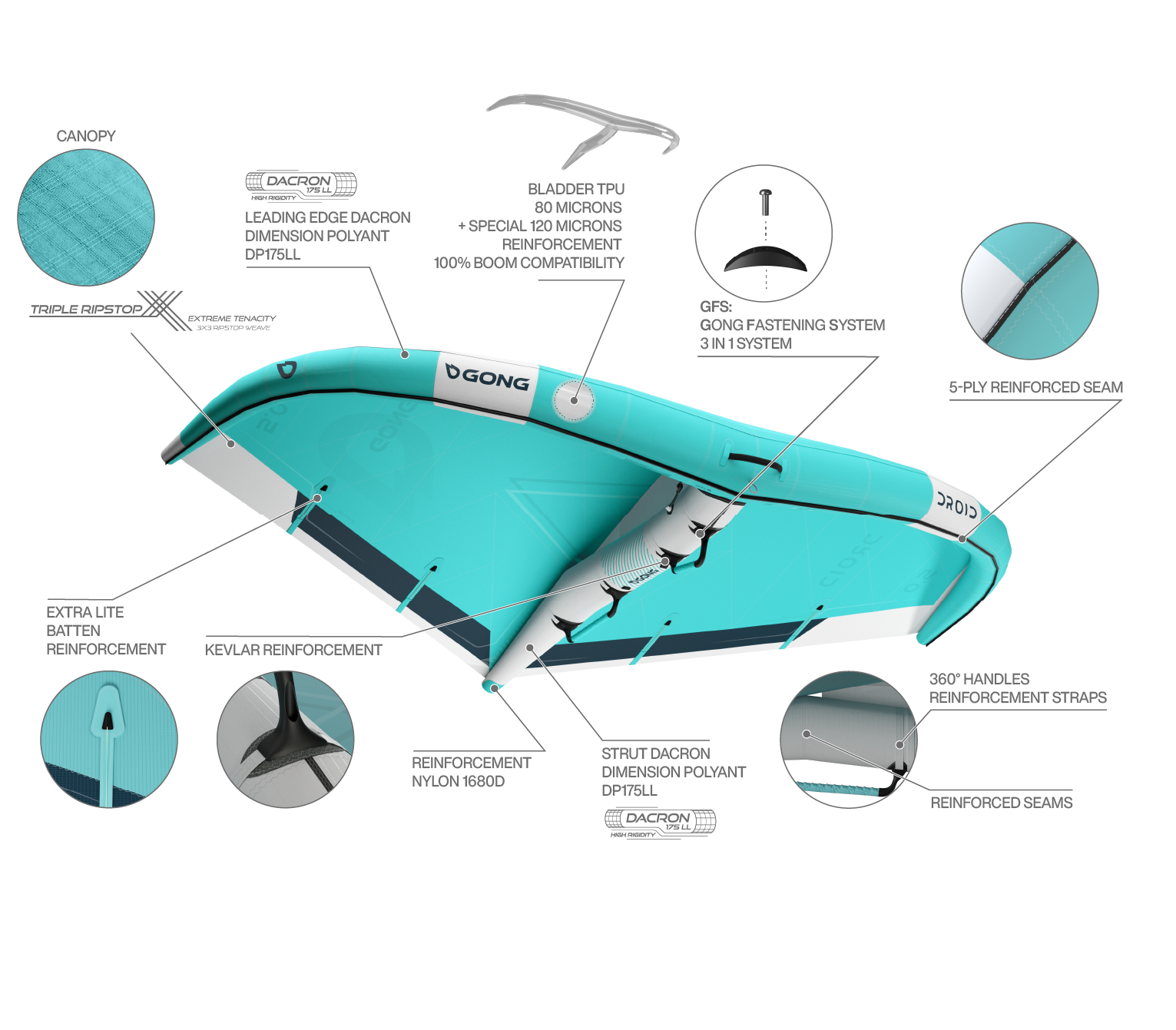
Shapes, dimensions and program
Understanding the Elements That Influence Your Wing's Performance and Feel
Understanding the factors that influence your wing's performance and feel is essential to choosing the perfect model.
Here are the key parameters to refine your choice:
Technical Parameters That Influence Performance
1. Camber
Camber determines the type of power generated by the wing.
- A pronounced camber provides more power for early takeoff, ideal in light wind conditions or for beginner riders seeking traction.
- A reduced camber prioritizes speed and stability in the high wind range, perfect for competitions or sessions in strong wind.
- A forward camber facilitates takeoff and generates more direct traction, offering a constant sense of control. It is ideal for marginal conditions or for riders seeking maximum lift.
- A recessed camber promotes smoother glide, making it particularly suitable for disciplines where finesse and speed are key, such as racing or wave riding.
2. Dihedral Angle
The dihedral corresponds to the angle formed by the two halves of the wing when viewed flat from the front.
- A pronounced dihedral makes flips easier, reduces power, simplifies tension and the appearance of the wing, and keeps the tips away from the water.
- A reduced dihedral improves aerodynamic efficiency, maneuverability, precision, and power but requires more precise work on tension.
3. Span
The span influences stability and maneuverability.
- A large span stabilizes and smooths the flight and optimizes glide.
- A reduced span increases power, enhances rotation and agility, and is ideal for freestyle or wave riding.
4. Aspect Ratio
The aspect ratio (span divided by width) directly impacts the wing’s behavior.
- A high aspect ratio promotes glide, speed, and directional stability.
- A low aspect ratio makes the wing more maneuverable, torque-rich, and accessible, making it perfect for beginners or freestyle.
5. Canopy Tension
The tension applied to the canopy directly impacts the stability and feel of the wing.
- High tension maintains the wing’s shape at its maximum efficiency, offering precise handling and increased stability, even in gusts. It is ideal for technical riders seeking maximum performance and consistent behavior.
- Soft tension allows the wing to "breathe" and adapt to wind variations, relieving the rider during long sessions or in irregular conditions. This is perfect for more comfortable freeriding but may lead to flapping and instability. A wing that self-regulates is good; a wing that deforms uncontrollably is not.
6. Leading Edge Curve
The curve affects rigidity and force distribution.
- A pronounced curve generates more power and improves low-end stability.
- A flatter curve increases maximum speed and responsiveness.
7. Trailing Edge Curve
- Positive curve (curved backward): Promotes power and efficiency during pumping but risks excessive flapping.
- Negative curve (curved forward): Reduces drag and flapping, ensuring maximum performance when properly powered.
8. Tip Shape
- Wide tips improve stability during takeoff and simplify control.
- Narrow tips reduce drag and enhance maneuverability but require more technical skill.
9. Tip Twist
The twist influences the distribution of power.
- Pronounced twist provides better control in gusty winds.
- Reduced twist maximizes power but can become difficult to handle in high wind ranges.
10. Panel Cut Design
The cut of the panels influences canopy tension and load distribution.
- Well-adjusted panels ensure shape stability and a more durable performance level.
- Multiple panels allow easier masking of potential repairs.
- However, more panels increase weight and cost due to longer stitching lengths.
11. Leading Edge Diameter
- A wide leading edge in the center improves structural rigidity and resistance to flex, increasing power but adding weight and drag.
- A thinner leading edge in the center allows for more flex, requiring higher inflation pressure. It results in a more refined profile.
- At the tips, a thinner diameter reduces drag and enhances maneuverability.
12. Central Strut Connection to Leading Edge
- A strong central strut connection to the leading edge limits tip twist, increasing responsiveness and power transfer to the rider. It also prevents trailing edge flapping.
- A weaker connection allows more twist, increasing tolerance and self-regulation, but it must be well-controlled.
13. Central Strut Shape
- A rigid central strut increases responsiveness and power transfer to the rider.
- A softer strut offers greater tolerance in changing conditions, allowing the trailing edge to open. However, this can lead to flapping and variations in the center of the power point.
14. Presence of Additional Battens
- Some wings incorporate side battens to increase rigidity and improve control.
- This increases weight and reduces maneuverability.
15. Anti-Vibration Battens on the Trailing Edge
- These specific battens reduce flutter and ensure silent and stable glide, improving durability.
Adapt Your Wing to Your Style and Needs
The above characteristics must be considered based on your program (racing, freestyle, wave riding, etc.) and the conditions in which you ride.
- A freestyle rider will favor a compact and responsive wing.
- A free-fly enthusiast will look for a stable and lightweight wing.
These elements shape the essence of each model, directly influencing its performance and feel on the water. You now have the tools to choose the wing that perfectly matches your ambitions.
Good to know
Tips and Advice to Optimize Your Wing Usage
Here are the essential points and best practices to maximize your performance in wingfoil and extend the lifespan of your equipment:
1. Adjust Inflation and Pressure
- Strictly follow the recommended pressure guidelines to optimize the wing's rigidity.
- Underinflation leads to performance loss, less precise shape, and can cause flapping.
- Always inflate to the maximum recommended pressure using an appropriate pump (dual action for initial inflation, single action for finalizing).
2. Proper Wing Maintenance
- Rinsing: Avoid systematically rinsing with fresh water, as salt can help prevent mold. If you rinse, do so sparingly to avoid damage from chlorine.
- Drying: Prefer drying the wing flat or inflated to prevent bladder displacement. Never hang a deflated wing by a handle.
- Storage: Store your wing away from sunlight, humidity, and extreme temperatures. Excessive heat or cold can degrade the materials.
3. Handling and Precautions
- On the beach: Place your wing on a clean surface, away from sharp or puncturing objects.
- While riding: Keep the wing out of the water as much as possible, especially in waves. A fall in waves can severely damage the fabric and seams.
- With a foil: Avoid any contact between the wing and the foil. A stabilizer or front wing can puncture the fabric instantly.
4. Maximizing Performance According to Conditions
- Light wind: Use a wing with pronounced camber to generate more power and make takeoff easier.
- Strong wind: Opt for a wing with a taut canopy for increased stability and better gust management.
- Cold water: Use a slightly larger wing to offset the extra weight of your gear.
5. In Case of a Fall or Emergency
- Use your wing to swim faster: Keep the leading edge facing the water, grab the wing, and let it inflate with the wind to provide additional support.
- Regularly inspect your leash before and after each session to avoid unexpected breakage.
6. Maintaining Wings with Windows
- Roll the ends toward the central strut to avoid pinching the PVC in the window.
- Store them dry to prevent color transfer between fabrics and PVC.
7. Safety and Responsible Riding
- Conditions: Ride in side or onshore wind conditions to ensure an easy return to shore if problems arise. Avoid offshore winds without secure assistance.
- Right of way and distance: Respect the right-of-way rules on the water and maintain a safe distance from other users.
- Safety gear: Wear a helmet, an impact vest, and always use a leash.
8. Specific Points for Long-Term Storage
- If not using the wing for an extended period, inspect the bladders and valves before your next session.
- Avoid excessive folding to preserve the integrity of seams and materials.
9. Common Sense and Good Seamanship
- Be aware of weather forecasts and currents.
- Never use a wing as a parachute or hang glider.
- Respect nature and help others in need, always with caution.
These recommendations are designed to support safe and efficient riding while ensuring the longevity of your wing. Be sure to adjust these tips based on your needs and the specifics of your sessions.


